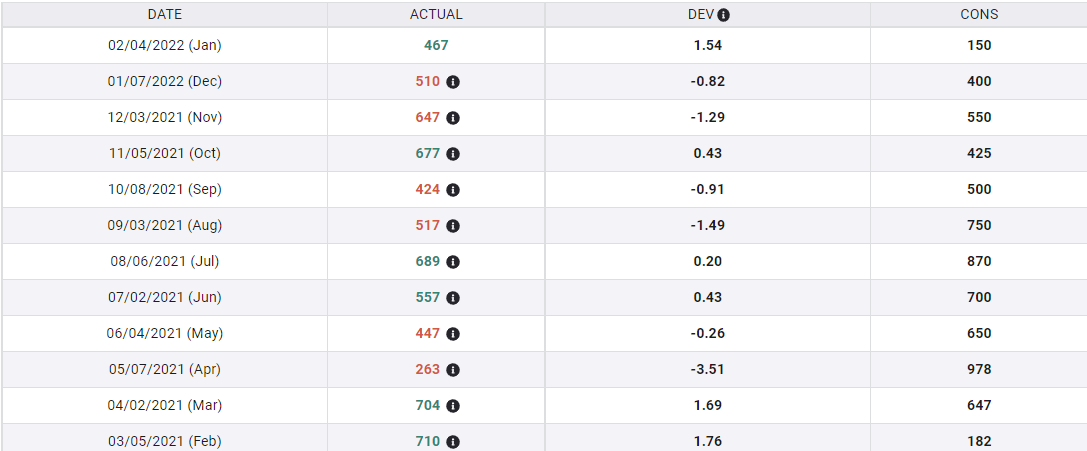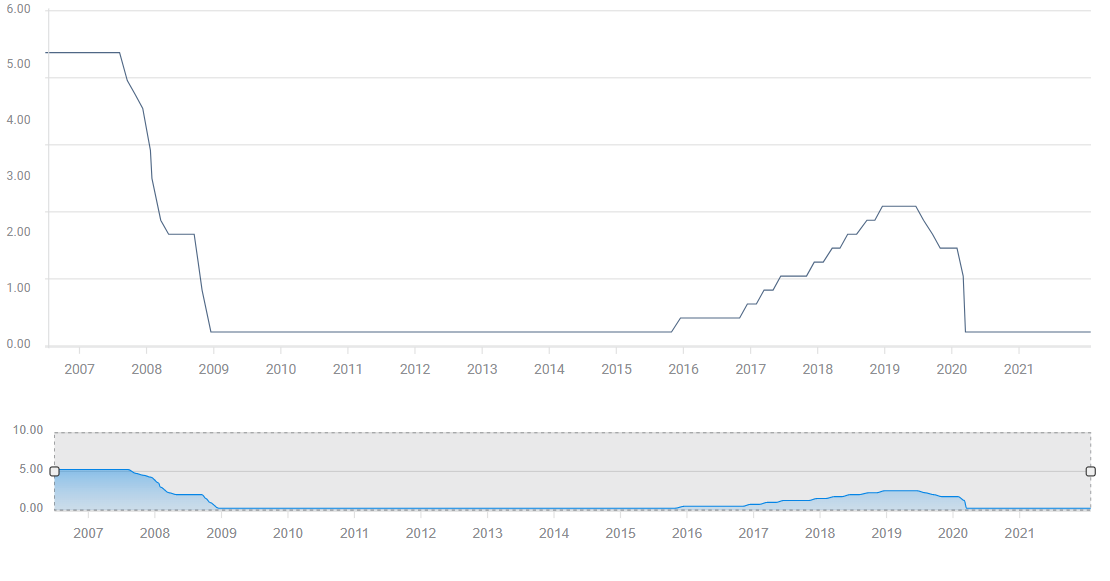- Private payrolls forecast to expand 350,000, NFP 438,000.
- ADP payrolls and NFP diverged sharply in January.
- Robust job creation needed for Fed’s aggressive rate projections.
Private payrolls should confirm that the US labor market continues to expand rapidly despite an unexpected decline in hiring in January.
The American clients of Automatic Data Processing (ADP) are forecast to have hired 350,000 new workers in February, more than covering the loss of 301,00 jobs the prior month. Nonfarm Payrolls, the Labor Department's national job track, is expected to show 438,000 new employees in February after 467,000 were employed in January.
The main interest of the ADP report is a precursor to the federal figures released two days later on Friday March 4.
ADP and NFP
The ADP report is limited to the private sector firms who use the company’s payroll services. It is a simple record of the month to month changes in total employees.
The Employment Situation Report, the official title of Washington's overall US employment statistics, includes government services at all levels, and an estimate for the number of workers hired by new businesses each month and not yet on the federal books.
The two main hiring gauges for the US have a relatively weak monthly correlation.
ADP
In the past 13 months the gauges have moved in the same directions in six months and opposite seven times. In January the disparity was striking. The ADP payrolls were forecast to grow 207,000. Instead they fell 301,000 after December's 776,000 gain. Nonfarm Payrolls were projected to add 150,000, they jumped 467,000, slightly down from 510,000 prior.
FXStreet
Because of this varied relationship markets will not move on the ADP results.
Labor market indicators
Initial jobless claims have reversed their January rise, though they are still some way from their late December lows. The four-week moving average rose from 199,750 in the December 24 week to 255,250 a month later on January 28. Since then claims have tailed down to 236,250 in the February 18 week.
The Job Openings and Labor Turnover Survey (JOLTS) registered 10.925 million unfilled positions in December. Over the last seven months this listing has averaged 10.758 million openings per month. That is by far the highest total on record. Before the pandemic lockdown and recovery the highest single month had been 7.574 million in November 2018.
JOLTS
FXStreet
Employment Indexes in the Purchasing Managers’ Surveys from the Institute for Supply Management have had a positive aspect for the past six months in services and for 15 months in manufacturing.
The manufacturing index slipped to 52.9 in February from 54.4 in January. From September through February the average was 52.9. The services index was 54.1 in August and 52.3 in January with a 52.4 average for the six months. February is predicted to be 53.5 when issued on March 3.
These labor market statistics, especially the low layoffs in claims and the exceptional number of open positions argue for continued high levels of hiring.
ADP, Federal Reserve rate policy and markets
Inflation has surmounted job creation as the Fed’s chief concern and policy focus. The governors are expected to vote for the first 0.25% increase in three years at their meeting on March 16. Until the Russian threat and then invasion of Ukraine, there was considerable speculation that the bank might enact a 0.5% hike.
Fed funds
On February 15 there had been a 57.9% probability of the greater increase based on the fed futures contracts at the Chicago Mercantile Exchange (CME). On Monday evening February 28, the odds for the larger hike were just 11.4%.
While a fed funds increase is expected whatever the ADP and NFP numbers turn out, a poor performance in the national payrolls will reduce the chances for the five 0.25% hikes anticipated in the futures by the final Federal Open Market Committee (FOMC) meeting of the year on December 14.
The ADP figures will have no trading impact in the equity, credit or currency markets.
Information on these pages contains forward-looking statements that involve risks and uncertainties. Markets and instruments profiled on this page are for informational purposes only and should not in any way come across as a recommendation to buy or sell in these assets. You should do your own thorough research before making any investment decisions. FXStreet does not in any way guarantee that this information is free from mistakes, errors, or material misstatements. It also does not guarantee that this information is of a timely nature. Investing in Open Markets involves a great deal of risk, including the loss of all or a portion of your investment, as well as emotional distress. All risks, losses and costs associated with investing, including total loss of principal, are your responsibility. The views and opinions expressed in this article are those of the authors and do not necessarily reflect the official policy or position of FXStreet nor its advertisers. The author will not be held responsible for information that is found at the end of links posted on this page.
If not otherwise explicitly mentioned in the body of the article, at the time of writing, the author has no position in any stock mentioned in this article and no business relationship with any company mentioned. The author has not received compensation for writing this article, other than from FXStreet.
FXStreet and the author do not provide personalized recommendations. The author makes no representations as to the accuracy, completeness, or suitability of this information. FXStreet and the author will not be liable for any errors, omissions or any losses, injuries or damages arising from this information and its display or use. Errors and omissions excepted.
The author and FXStreet are not registered investment advisors and nothing in this article is intended to be investment advice.
Recommended Content
Editors’ Picks

EUR/USD holds above 1.0400 in quiet trading
EUR/USD trades in positive territory above 1.0400 in the American session on Friday. The absence of fundamental drivers and thin trading conditions on the holiday-shortened week make it difficult for the pair to gather directional momentum.

GBP/USD recovers above 1.2550 following earlier decline
GBP/USD regains its traction and trades above 1.2550 after declining toward 1.2500 earlier in the day. Nevertheless, the cautious market mood limits the pair's upside as trading volumes remain low following the Christmas break.

Gold declines below $2,620, erases weekly gains
Gold edges lower in the second half of the day and trades below $2,620, looking to end the week marginally lower. Although the cautious market mood helps XAU/USD hold its ground, growing expectations for a less-dovish Fed policy outlook caps the pair's upside.

Bitcoin misses Santa rally even as on-chain metrics show signs of price recovery
Bitcoin (BTC) price hovers around $97,000 on Friday, erasing most of the gains from earlier this week, as the largest cryptocurrency missed the so-called Santa Claus rally, the increase in prices prior to and immediately following Christmas Day.

2025 outlook: What is next for developed economies and currencies?
As the door closes in 2024, and while the year feels like it has passed in the blink of an eye, a lot has happened. If I had to summarise it all in four words, it would be: ‘a year of surprises’.

Best Forex Brokers with Low Spreads
VERIFIED Low spreads are crucial for reducing trading costs. Explore top Forex brokers offering competitive spreads and high leverage. Compare options for EUR/USD, GBP/USD, USD/JPY, and Gold.



